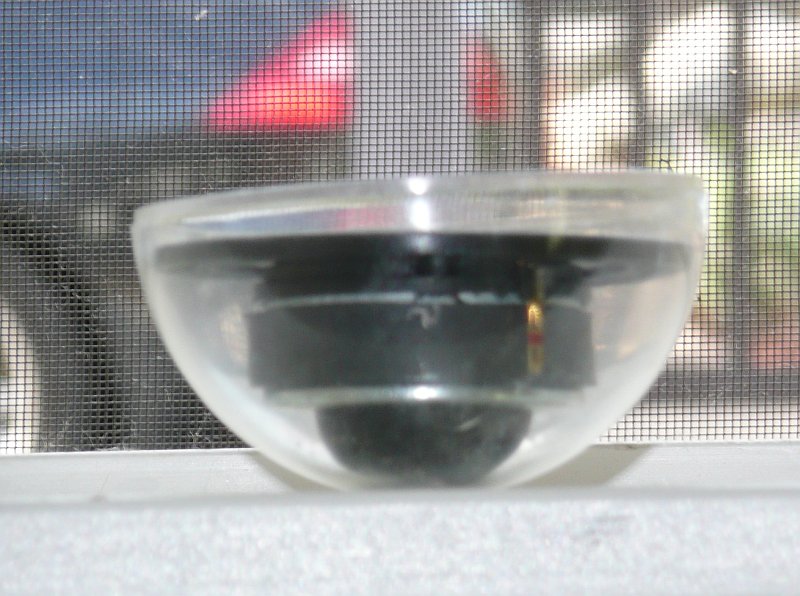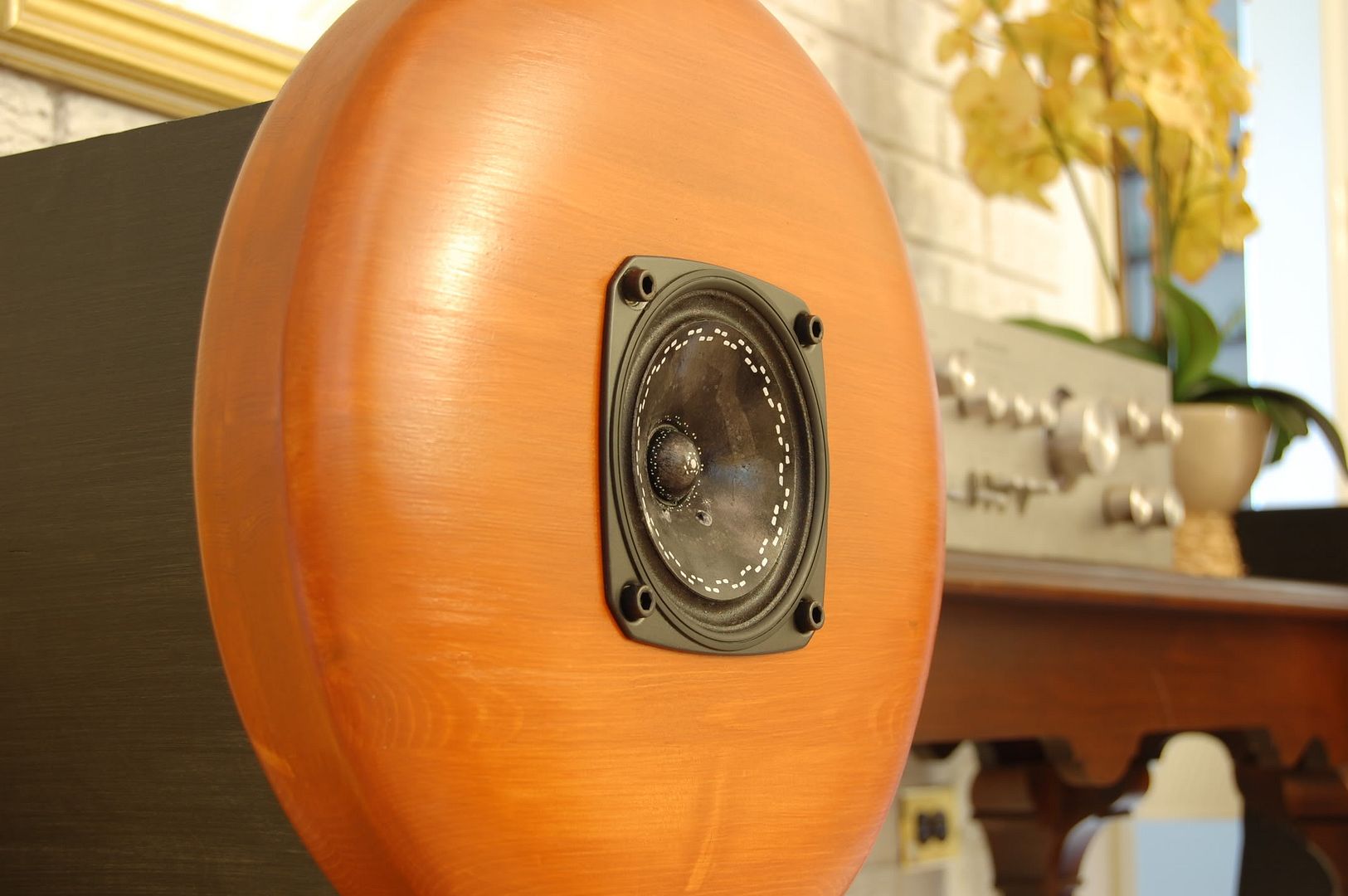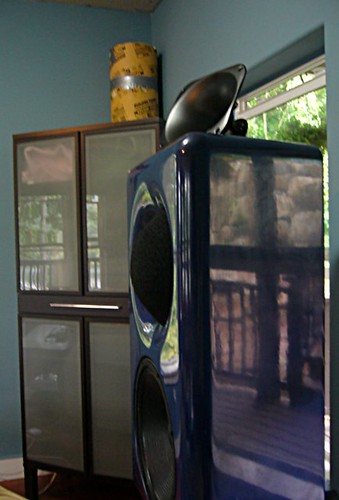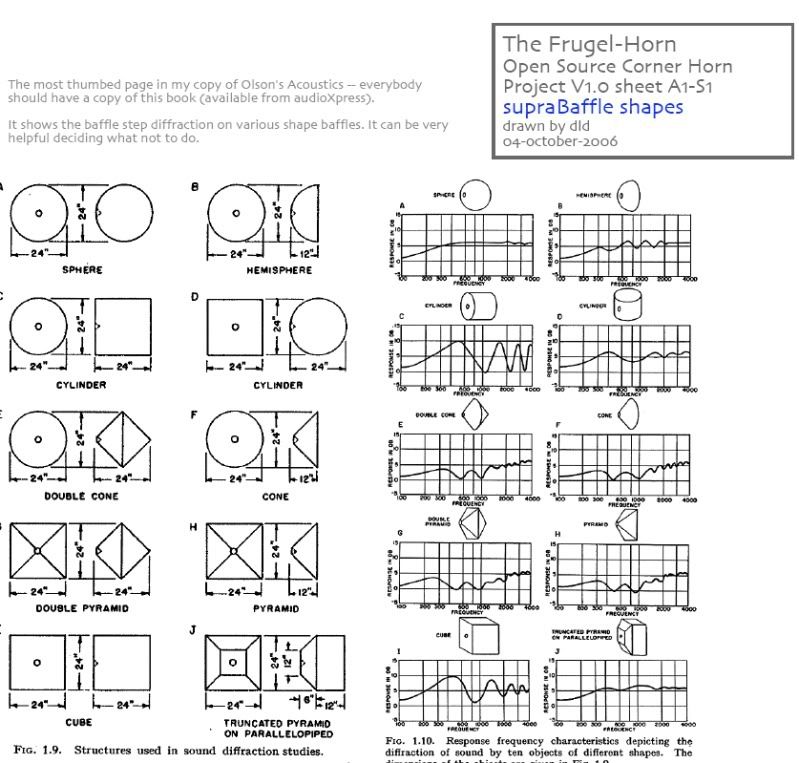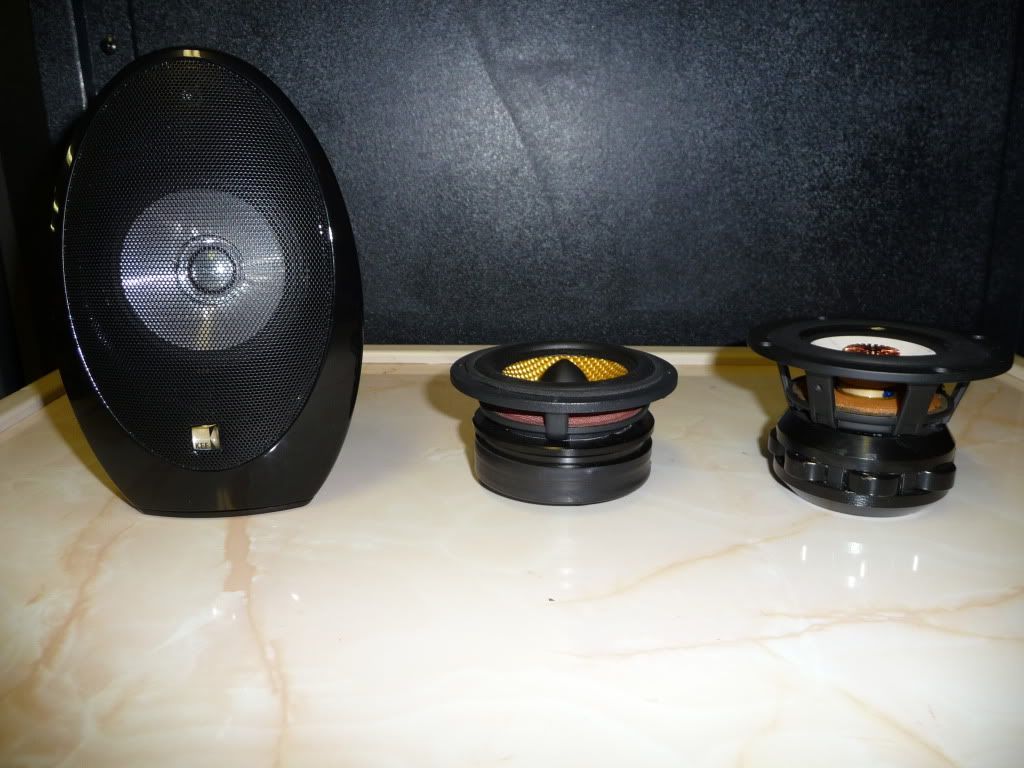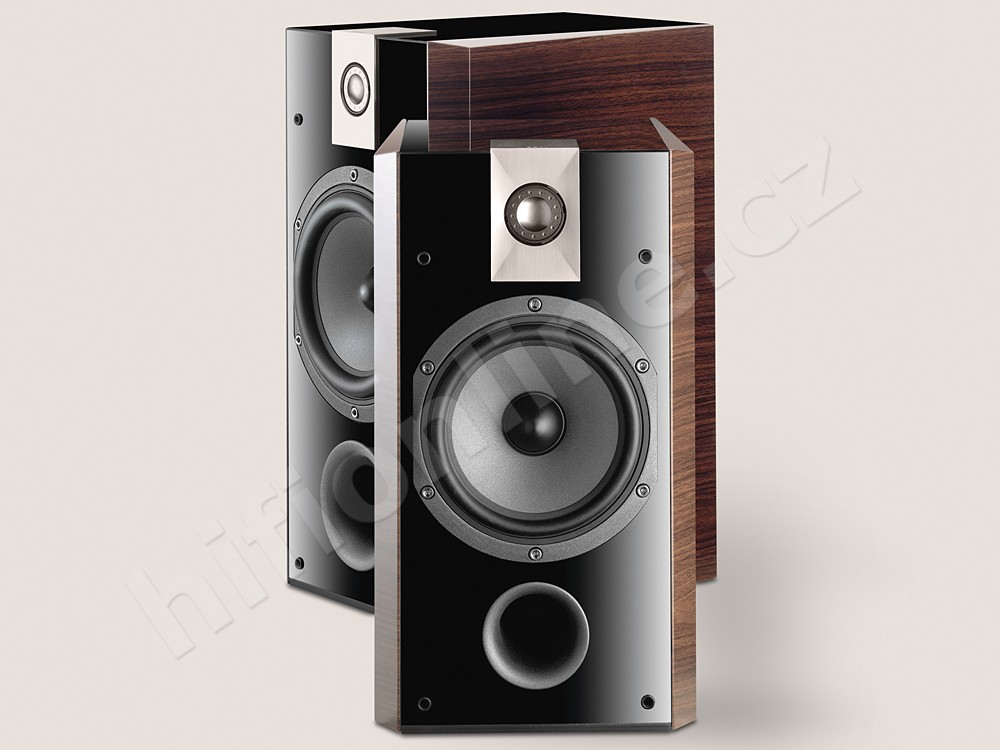Some people asked me to post this info, so here goes:
How to improve your soundstage for two bucks.
If you've ever listened to a set of audiophile mini-monitors, you may have noticed that they throw a really amazing soundstage. The reason that they do this is that the enclosure is very small.
But we can replicate this effect with a much larger enclosure by reducing diffraction. Here's how this works:
When the sound from your speaker hits *anything*, it creates a reflection. These reflections are perceived by your ears as a secondary sound source. So for instance, if you take a set of mini monitors and place them six inches away from a wall, the reflection off that wall will muddy the image. That's why speakers sound better when you pull them away from a wall.
What's interesting about this phenomenon is that it's VERY time dependent. A reflection that occurs an inch or two from your speaker is 10x worse than a reflection which occurs a foot away.
Having established that reflections are a BAD thing, how do we address that? Here's a few options:
With sound diffusion, we're basically taking that reflection, and spreading it waaaaaaaay out in frequency in time. So instead of a big ol' nasty reflection at one spot and one frequency, we're spreading it out over an octave or two, over a few milliseconds.
Here's a couple pics of some speakers which use diffusion to improve their soundstaging abilities.
![Image]()
![Image]()
Subjectively, the speaker becomes more difficult to localize when it's in a spherical enclosure. The soundstage becomes more diffuse, and seems to float "around" the speakers instead of being tied to them. The sound is also sweeter and less fatiguing.
And this is only common sense of course. Imagine a sound wave striking a sharp edge, diffracting violently:
![Image]()
Now imagine the same sound wave in a spherical enclosure. The energy is the same, but the sound is diffused gently across the smooth surface. The improvement in the polar response is measurable, and the subjective improvement is obvious.
In part two I'll describe how to do it...
How to improve your soundstage for two bucks.
If you've ever listened to a set of audiophile mini-monitors, you may have noticed that they throw a really amazing soundstage. The reason that they do this is that the enclosure is very small.
But we can replicate this effect with a much larger enclosure by reducing diffraction. Here's how this works:
When the sound from your speaker hits *anything*, it creates a reflection. These reflections are perceived by your ears as a secondary sound source. So for instance, if you take a set of mini monitors and place them six inches away from a wall, the reflection off that wall will muddy the image. That's why speakers sound better when you pull them away from a wall.
What's interesting about this phenomenon is that it's VERY time dependent. A reflection that occurs an inch or two from your speaker is 10x worse than a reflection which occurs a foot away.
Having established that reflections are a BAD thing, how do we address that? Here's a few options:
- Use a waveguide to 'funnel' the sound in one direction. I do this in most of my projects. It's a LOT of work
- Absorb the sound. You can do this with sound absorbing pads, like they use in a studio. Not really practical in a car.
- Diffuse the sound. This works really well. Despite all the work I've investigated in waveguides, I'll admit that it works nearly as well, and it's a hell of a lot less work.
With sound diffusion, we're basically taking that reflection, and spreading it waaaaaaaay out in frequency in time. So instead of a big ol' nasty reflection at one spot and one frequency, we're spreading it out over an octave or two, over a few milliseconds.
Here's a couple pics of some speakers which use diffusion to improve their soundstaging abilities.

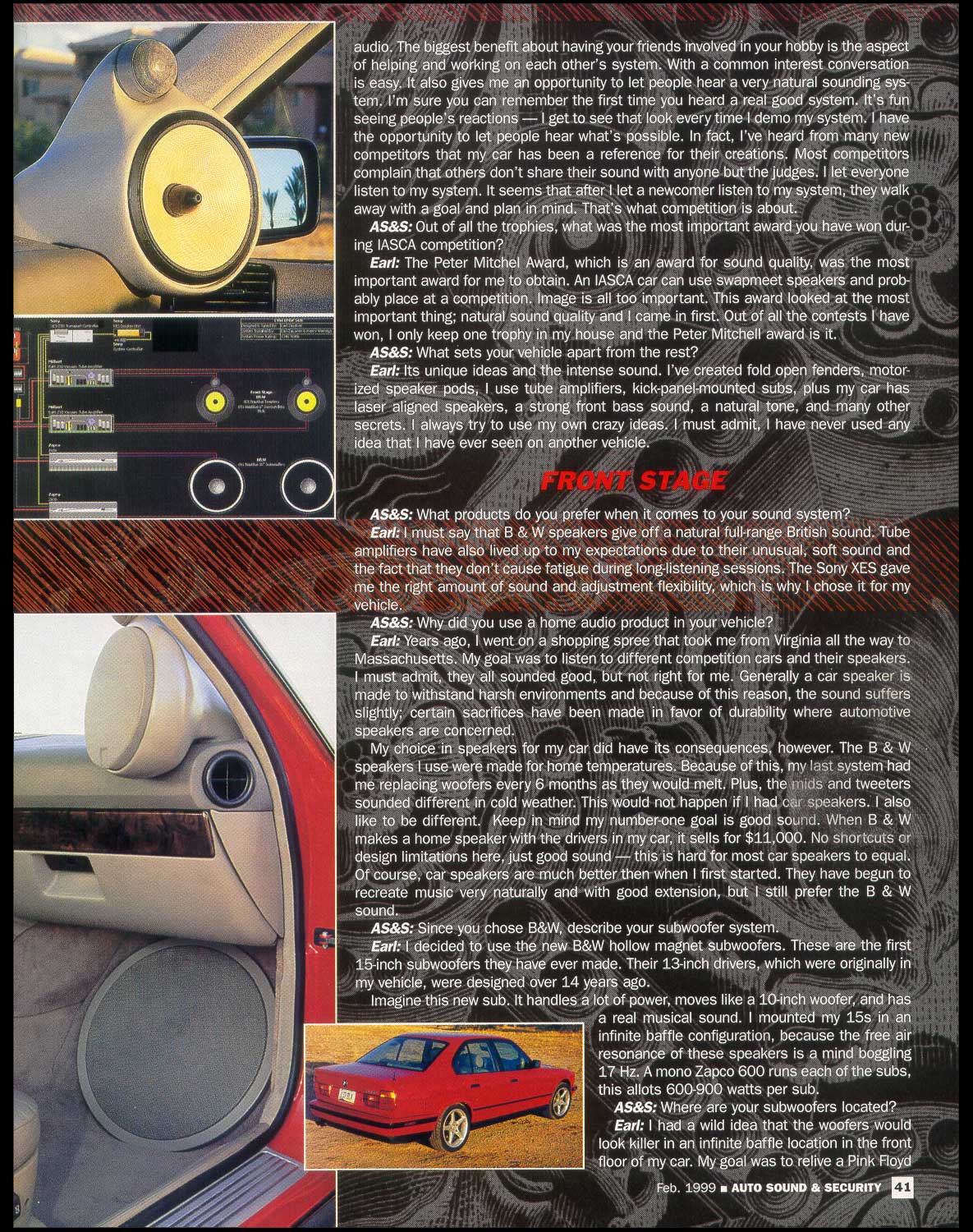
Subjectively, the speaker becomes more difficult to localize when it's in a spherical enclosure. The soundstage becomes more diffuse, and seems to float "around" the speakers instead of being tied to them. The sound is also sweeter and less fatiguing.
And this is only common sense of course. Imagine a sound wave striking a sharp edge, diffracting violently:

Now imagine the same sound wave in a spherical enclosure. The energy is the same, but the sound is diffused gently across the smooth surface. The improvement in the polar response is measurable, and the subjective improvement is obvious.
In part two I'll describe how to do it...


